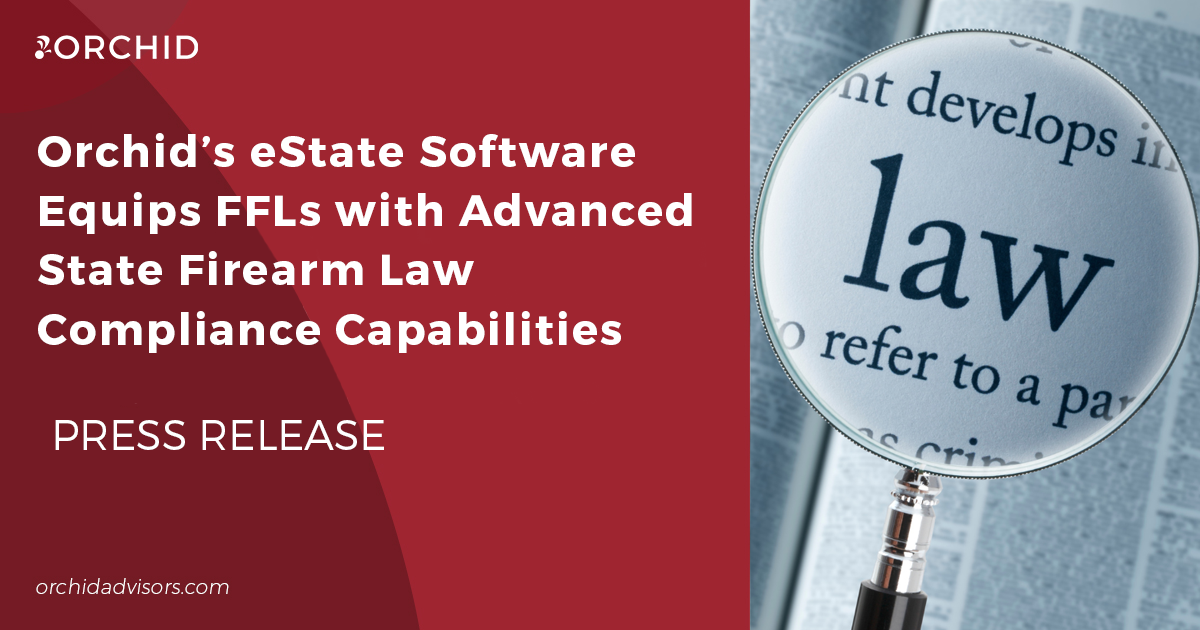 Download or read below
Amidst the new laws and new lawsuits in CO, CT, MD, and NY, a topic near and dear to heated manufacturing debate quietly passed under the radar of most media outlets. California, which had passed a law in 2007, announced on May 18, 2013 that the microstamping law was to be considered in full force and effect. And, on June 5, 2013, the National Academy of Sciences issued its research recommendations to President Obama, including a multi-page section on gun technology with only a passing reference to microstamping.
With multiple states debating microstamping bills and with several governors on the record on the topic, this week seemed an appropriate time to highlight these contrasting developments.
The California microstamping statute relative to semi-automatic pistols (CA AB-1471) was signed into law in 2007, but it included suspended implementation contingent upon patent expirations. On May 17, 2013, the California Attorney General on behalf of the CA Department of Justice certified the enforceability of CA Penal Code §31910(b)(7)(A) that microstamping technology would be considered available to more than one manufacturer, unencumbered by any patent restrictions.
The 2007 statute is now enforceable and all new semi-automatic firearms sold in California are required to include a unique microstamp on every shell ejected when fired. Here’s the specific language defining microstamping technology: “a microscopic array of characters that identify the make, model, and serial number of the pistol, etched or otherwise imprinted in two or more places on the interior surface or internal working parts of the pistol, and that are transferred by imprinting on each cartridge case when the firearm is fired.”
California uses an allowed firearms list, titled “Roster of Handguns Certified for Sale in California” pursuant to CA Penal Code §32015. Semi-automatic pistols already listed on the CA Roster are exempted from microstamping technology, as long as the firearms otherwise comply with other Penal Code sections. New firearms will not be added to this list unless they include implementation of the technology; such will otherwise be deemed an “unsafe handgun.”
The California law is the first of its kind in the country to go into effect.
Switching over to the release of the prepublication copy of the NAS report, microstamping did not make the list of recommended research technologies. The context of the NAS report is as follows: Back in January 2013, President Obama issued 23 executive actions, including action item #14, characterizing gun violence as a public health issue that warranted further research. A CDC requested the Institute of Medicine and National Research Council convene a committee to develop a potential research agenda for the next three to five years. On June 5, 2013, the National Academy of Sciences issued a prepublication copy of its report.
The lengthy NAS report is a research resource with 19, single-spaced pages of references. Even with so many citations, what may be surprising to some is how plainly the conclusion reached in section after section is that the available data is “inconclusive,” “inconsistent,” and “unclear.”
Inconclusive, that is, except as to one section titled “Impact of Gun Safety Technology.” This is the only section that references manufacturers by name and in a historical context, and where safety mechanisms are described as “widely available.” (57)
What gets interesting is that the section also talks about so-called “smart technologies” used in “smart guns,” which NAS defines as “…an overarching concept to cover all weapons that have some level of user authorization.” (54) The report describes such smart technologies to include:
– radio frequency identification;
– magnetic encoding;
– biometric systems;
– location awareness; and,
– target recognition.
Each of these technology types with example manufacturers, products, and research institutions is noted in the report. (57-58) The report specifically comments that it did not consider several other technologies, including micro-stamping of ammunition. (59)
The discussion portion of this section of the NAS report goes on to state “The current state of smart-gun technology appears to be reaching a level of maturity at which private-industry adoption is important and necessary to move the technology to broader use.” (59) It compares these technologies to the adoption and mandate for features in cars such as seatbelts and airbags. (56, 61)
We’ve uploaded the California Penal Law section, the California Certification statement, and the NAS Report to our on-line Orchid Advisors research library on the “California” page. A reminder for your log-in information can be found at the top of the right hand column of this Advisory.
Download or read below
Amidst the new laws and new lawsuits in CO, CT, MD, and NY, a topic near and dear to heated manufacturing debate quietly passed under the radar of most media outlets. California, which had passed a law in 2007, announced on May 18, 2013 that the microstamping law was to be considered in full force and effect. And, on June 5, 2013, the National Academy of Sciences issued its research recommendations to President Obama, including a multi-page section on gun technology with only a passing reference to microstamping.
With multiple states debating microstamping bills and with several governors on the record on the topic, this week seemed an appropriate time to highlight these contrasting developments.
The California microstamping statute relative to semi-automatic pistols (CA AB-1471) was signed into law in 2007, but it included suspended implementation contingent upon patent expirations. On May 17, 2013, the California Attorney General on behalf of the CA Department of Justice certified the enforceability of CA Penal Code §31910(b)(7)(A) that microstamping technology would be considered available to more than one manufacturer, unencumbered by any patent restrictions.
The 2007 statute is now enforceable and all new semi-automatic firearms sold in California are required to include a unique microstamp on every shell ejected when fired. Here’s the specific language defining microstamping technology: “a microscopic array of characters that identify the make, model, and serial number of the pistol, etched or otherwise imprinted in two or more places on the interior surface or internal working parts of the pistol, and that are transferred by imprinting on each cartridge case when the firearm is fired.”
California uses an allowed firearms list, titled “Roster of Handguns Certified for Sale in California” pursuant to CA Penal Code §32015. Semi-automatic pistols already listed on the CA Roster are exempted from microstamping technology, as long as the firearms otherwise comply with other Penal Code sections. New firearms will not be added to this list unless they include implementation of the technology; such will otherwise be deemed an “unsafe handgun.”
The California law is the first of its kind in the country to go into effect.
Switching over to the release of the prepublication copy of the NAS report, microstamping did not make the list of recommended research technologies. The context of the NAS report is as follows: Back in January 2013, President Obama issued 23 executive actions, including action item #14, characterizing gun violence as a public health issue that warranted further research. A CDC requested the Institute of Medicine and National Research Council convene a committee to develop a potential research agenda for the next three to five years. On June 5, 2013, the National Academy of Sciences issued a prepublication copy of its report.
The lengthy NAS report is a research resource with 19, single-spaced pages of references. Even with so many citations, what may be surprising to some is how plainly the conclusion reached in section after section is that the available data is “inconclusive,” “inconsistent,” and “unclear.”
Inconclusive, that is, except as to one section titled “Impact of Gun Safety Technology.” This is the only section that references manufacturers by name and in a historical context, and where safety mechanisms are described as “widely available.” (57)
What gets interesting is that the section also talks about so-called “smart technologies” used in “smart guns,” which NAS defines as “…an overarching concept to cover all weapons that have some level of user authorization.” (54) The report describes such smart technologies to include:
– radio frequency identification;
– magnetic encoding;
– biometric systems;
– location awareness; and,
– target recognition.
Each of these technology types with example manufacturers, products, and research institutions is noted in the report. (57-58) The report specifically comments that it did not consider several other technologies, including micro-stamping of ammunition. (59)
The discussion portion of this section of the NAS report goes on to state “The current state of smart-gun technology appears to be reaching a level of maturity at which private-industry adoption is important and necessary to move the technology to broader use.” (59) It compares these technologies to the adoption and mandate for features in cars such as seatbelts and airbags. (56, 61)
We’ve uploaded the California Penal Law section, the California Certification statement, and the NAS Report to our on-line Orchid Advisors research library on the “California” page. A reminder for your log-in information can be found at the top of the right hand column of this Advisory.The ATF Changes Definition of “Engaged in the Business”
The final version of ATF Rule 2022R-17 has been submitted to the Federal Register and will go into effect 30 days after the date...






0 Comments